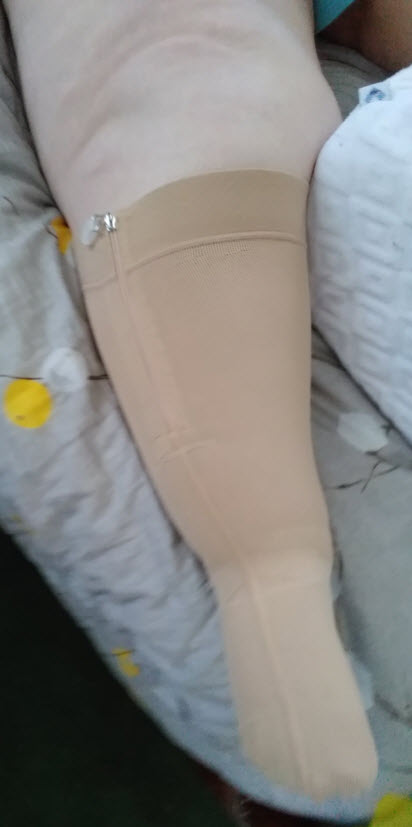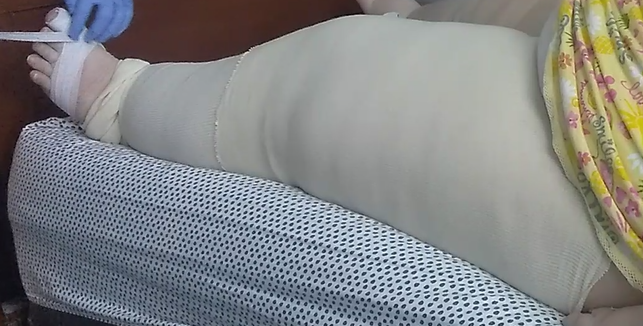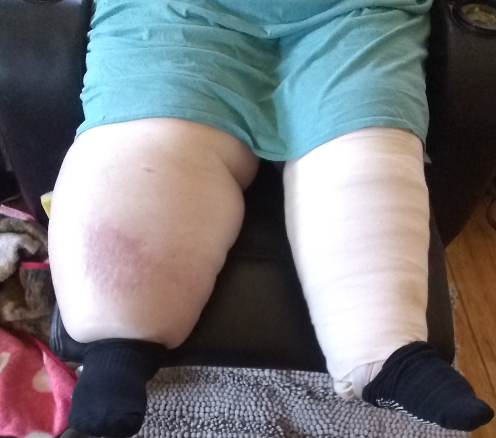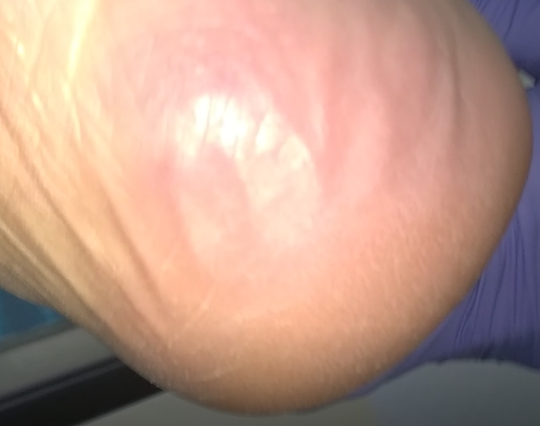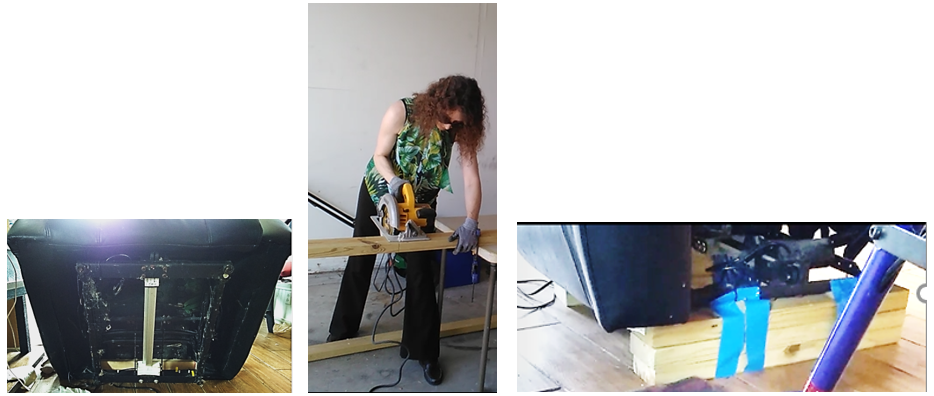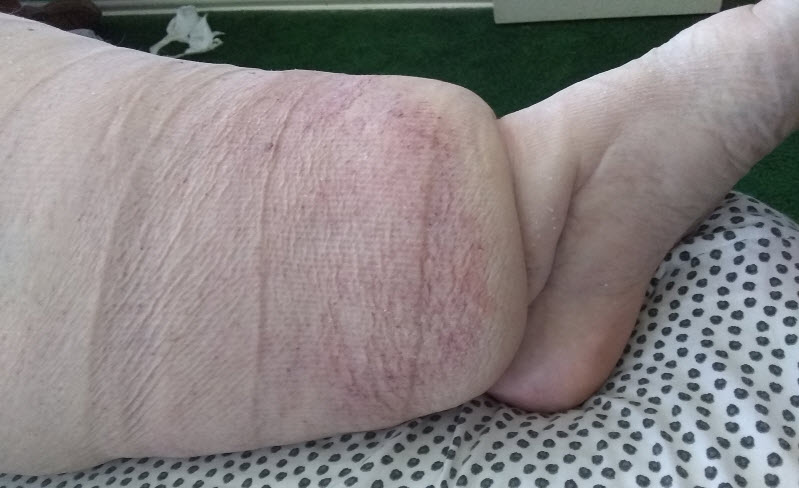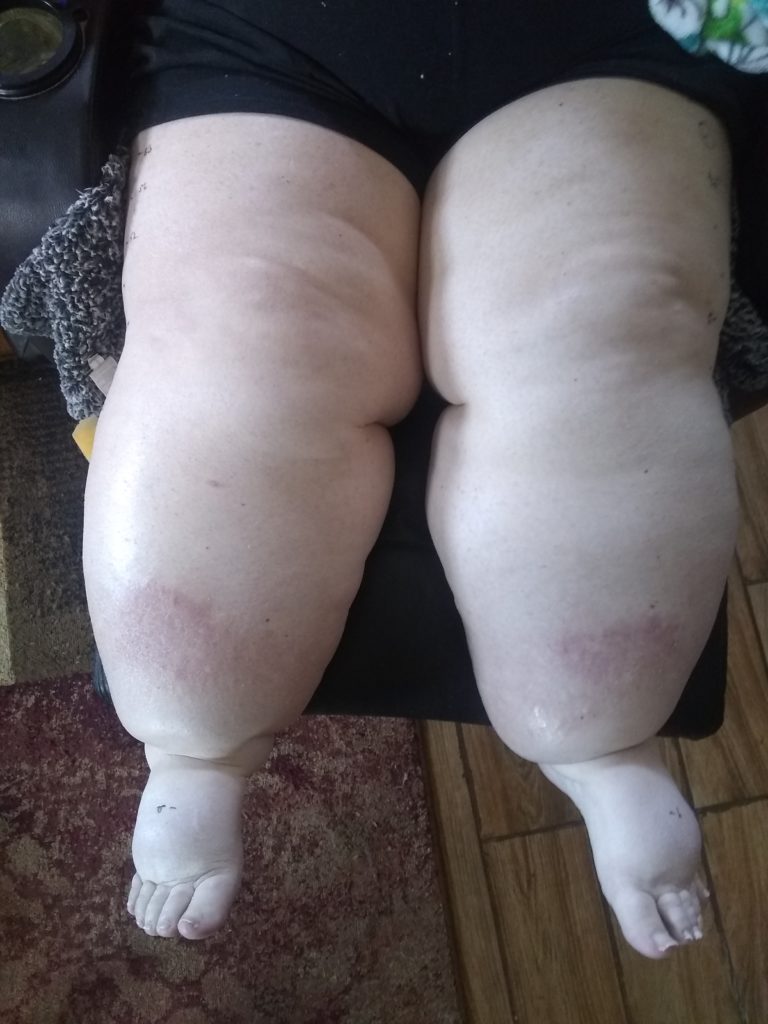Janie* was my high school English teacher. She is also the first person I knew who had lymphedema (though I didn’t know it at the time). I recall seeing her walk down a hallway at school & noticing her left leg was larger than the right (she often wore skirts and dresses). I wondered why but never really gave it much thought. She was just “Mrs. Mitzer,” my English teacher. Another occasion, I noticed she wore a hose on her left leg that was stretched to the point that tiny gaps in the fabric could be seen. It would be years before I would understand why Janie’s leg was larger & why her sock was so stretched.

A photo of Janie from my high school year book
Not long ago I decided to transition in business with the purpose of raising awareness about lymphedema & being able to help a greater number of people. One way I am doing that is by telling the stories of people who have lymphedema & developing educational videos. Many of these stories will be from people I have treated. But this story is different. Given my new venture, it seemed fitting to pay tribute to the past & recognize Janie since she was the first person I knew who had lymphedema. Regretfully, she passed away in 2009. I wondered if her family would be willing to talk about her experience with lymphedema. I contacted her husband, Dennis, earlier this year.
The interview
Dennis graciously obliged. He has since remarried to Jane. Both Jane & Dennis were present for the discussion. The first question Dennis asked me when he saw my notepad was, “Is that notepad filled with questions?” I assured him it wasn’t. The notepad did have a few questions, but it was mostly filled with notes I had taken while reviewing Janie’s medical records which he had provided me before our interview.

The beginning
Janie’s medical story begins in 1979 when she was diagnosed with stage 4B, nodular sclerosing classical Hodgkin lymphoma. At the time Janie’s cancer was found, it had spread beyond her lymph nodes & throughout her abdomen. Dennis remembered Janie waking up at night sweating, her pillow & night clothes soaked. Indications of Hodgkin lymphoma can include night sweats, fever, weight loss & other symptoms. She received several chemotherapy treatments & eliminated all signs of cancer (as a 1980 exploratory laparotomy confirmed). One of the potential consequences of Hodgkin lymphoma is secondary cancer including, but not limited to, breast cancer. That would later prove true in Janie’s case.
First signs of swelling
In April of 1982, Janie noticed swelling in her left ankle, but it resolved with elevation. Medical records indicate the swelling was graded at 2+. This means a finger could be depressed into the skin slightly (less than ¼ of an inch) or the tissue would hold a depression for up to a max of 15 seconds. There was fullness in the left lower part of her abdomen as well. The initial fear was lymphoma recurrence, but a CT scan & exploratory surgery of her left groin (inguinal lymph nodes) ruled this out. Imaging did reveal an enlarged left ovarian cyst. Doctors felt her leg swelling might be due to venous obstruction caused by this cyst putting pressure on her [left iliac vein] or due to scar tissue.
However, a medical note I read indicated suspicion of a superficial blood clot. A superficial clot is usually less concerning than a deeper one (called a deep vein thrombosis or DVT). Symptoms of a blood clot generally include swelling as well as pain, redness & warmth. Janie’s only symptom was swelling which initially went down with elevation. A venogram did not show a definitive clot, but this theory persisted in her medical records.

Suspect superficial thrombophlebitis
The name of the cancer Janie had, “nodular sclerosing,” indicates its behavior.1, 2 This cancer creates fibrosis and sclerosis or thick bands of collagen (scar tissue) in the lymph nodes. This would likely contribute to lymphedema in her left leg as it would likely impair lymph node function.
Other contributing factors
Janie also had several surgeries in the left inguinal & pelvic areas over time which would cause trauma & scarring. Between 1982 & 1984, she developed an infection in her left leg (twice) called cellulitis. She was a teacher & spent a good deal of time standing and sitting, increasing the pressure in her legs. Veins in the legs must overcome the pressure caused by gravity in order to return fluid to the heart. Over time, those veins begin to tire & weaken. The lymphatic system takes up the slack for a while, but just like veins, they can fatigue & weaken also. When they do, scarring ensues as molecules they normally remove now remain in the tissue. All these scenarios could have caused her lymphedema to get worse.
To be continued 10/01/21.
References
1 Bankov K, Döring C, Ustaszewski A, Giefing M, Herling M, Cencioni C, Spallotta F, Gaetano C, Küppers R, Hansmann ML, Hartmann S. Fibroblasts in Nodular Sclerosing Classical Hodgkin Lymphoma Are Defined by a Specific Phenotype and Protect Tumor Cells from Brentuximab-Vedotin Induced Injury. Cancers (Basel). 2019 Oct 30;11(11):1687. doi: 10.3390/cancers11111687. PMID: 31671543; PMCID: PMC6896072. Available from: https://pubmed.ncbi.nlm.nih.gov/31671543/.
2 Kamal MM, Khude SR, Yadav SB, Raut WK, Pangarkar MA. Syncytial variant of nodular sclerosing Hodgkin’s disease: A diagnostic pitfall in fine-needle aspiration cytology. J Cytol. 2014;31(2):91-92. doi:10.4103/0970-9371.138674. Available from: https://www.ncbi.nlm.nih.gov/pmc/articles/PMC4159904/.
